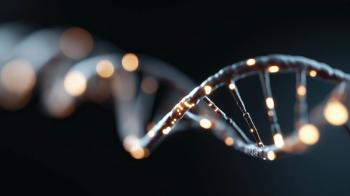
- Psychiatric Times Vol 24 No 12
- Volume 24
- Issue 12
Comorbid Medical Illnesses in Children With Psychogenic Nonepileptic Seizures
It is not known what makes children vulnerable to the development of psychogenic nonepileptic seizures. To date, there are no research studies available on the epidemiological, medical, or genetic risk factors for childhood PNES.
It is not known what makes children vulnerable to the development of psychogenic nonepileptic seizures (PNES). To date, there are no research studies available on the epidemiological, medical, or genetic risk factors for childhood PNES. Historically, because of their clinical similarities and co- occurrence, clinical interest has focused on exploring the specific relationships between PNES and epilepsy. The prevalence of comorbid epilepsy in adults with PNES ranges from 10% to 50%.1,2
In contrast to adults, comorbidity with epilepsy in children with PNES depends on the age of the child. Kotagal and colleagues3 report that in children younger than 5 years, the prevalence of comorbid epilepsy is 48%, in children aged 5 to 12 years it is 25%, and in adolescents older than 12 it is 19%. Thisvariability suggests that in childhood, epilepsy and PNES are opposite in their developmental trajectories. Epilepsy is much more frequent in children younger than 5 years. The prevalence of PNES reflects the opposite trajectory-it is rare in younger children but becomes more frequent in adolescence.
The effect of the patient's sex on PNES also differs in adult and pediatric clinical samples. In adults, the prevalence of PNES is higher in women. The disorder is also more common in adolescent girls than in boys but is almost equally prevalent in preadolescent boys and girls.
Diagnosis
In children, the characteristics of PNES closely resemble actual seizure symptoms. PNES usually present as generalized body weakness, altered consciousness, random limb and body jerking, and sensory changes but do not arise from abnormal brain electrical discharges. Such similar clinical phenomenology may be one of the reasons for difficulties in timely and accurate diagnosis of PNES in children. In pediatric samples, the average time to a diagnosis of PNES is about 3.5 years, and 43% to 95% of children are taking antiepileptic medications at the time of the initial diagnosis of PNES (S. Plioplys, unpublished data).4-6 However, there has been major progress in the neurological diagnostic process for PNES as the widespread use of video-encephalography (v-EEG), a gold-standard diagnostic method, has made the electrographic assessment of PNES more reliable and accurate.
Association with psychopathology
An area of clinical interest and research has been the association of PNES with psychopathology. Children and adolescents with PNES have high rates of psychiatric problems, although supportive data are available only from small clinical case series or retrospective studies. Wyllie and colleagues4 used a clinical psychiatric diagnostic interview, based on DSM-IV diagnostic criteria, to identify the frequency of psychiatric disorders in children with PNES aged 9 to 18 years (N = 34). In addition to conversion disorder, mood disorders (major depression, bipolar disorder, dysthymic disorder) were reported in one third of the patients; separation anxiety in one fourth; and in smaller numbers, posttraumatic stress disorder, other anxiety or behavioral disorders, and brief reactive psychosis.
Despite a high incidence of comorbid psychiatric disorders, little progress has been achieved in understanding the underlying psychiatric vulnerability for the development of PNES. Specific psychiatric diagnostic criteria for PNES are not available. According to DSM-IV-TR, PNES can be diagnosed as conversion disorder, factitious disorder, or malingering. For conversion disorder, a nonictal v-EEG recording and the presence of underlying psychological factors, such as unresolved conflict or ineffective coping with ongoing stressors, must be present. Less frequently, PNES are diagnosed as factitious disorder if they result from the fabrication of symptoms to assume the sick role; if the motivation is to avoid responsibilities, then it is malingering. Identification of ongoing stressors and understanding of the child's coping abilities may be the key strategies in meaningful interpretation of the child's underlying psychological factors and/or intentions to produce clinical symptoms of PNES.
Although chronic medical illnesses affect up to 20 million children in the United States and cause significant stress to patients and their families,7 the association between medical illnesses and childhood-onset PNES has not been examined. Chronically ill children have twice the risk of psychosocial adjustment problems as healthy children. Psychological symptoms do not appear to be disease-specific, and an increase in prevalence of anxiety, depression, sleep problems, eating disorders, and excessive fears has been reported.8
The current body of literature reports that psychopathology in children with chronic medical illnesses results from complex interactions between the specific medical variables (types of diseases, treatments received, child's cognitive development), general psychological factors (ie, child's coping abilities, developmental functioning) and the burden of chronic illness itself.9 Family functioning (available support systems, effective coping with the child's illness, and each family member's own stress) also play an important role in the development of psychopathology in the medically ill child.10
Characteristics of children with PNES
A retrospective chart review study was undertaken to characterize children who had had a diagnosis of PNES at Children's Memorial Hospital (Chicago) over a 5-year period. Children's Memorial Hospital is an urban pediatric hospital with a specialized pediatric epilepsy center. We used key words "psychogenic seizures," "nonepileptic seizures," and "pseudoseizures" to search a computerized v-EEG database at the epilepsy monitoring unit (EMU). A diagnosis of PNES was confirmed by an attending epileptologist after 24-hour v-EEG recordings were reviewed.
This search identified 44 patients with PNES aged 6 to 18 years (mean age, 12.7 ± 3.0) from 1362 individual v-EEG studies completed for diagnostic seizure workups between January 1, 2001, and December 31, 2005 (Table 1).
The frequency of PNES in this sample was 3%, which is significantly smaller than in previously reported studies. One explanation may be that patients with other nonepileptic paroxysmal episodes, such as vasovagal syncope, complex motor tics, movement disorders, and staring, were not included; only those with a specific diagnosis of PNES on the neurology evaluation report were selected. Demographic data, epilepsy-related variables, comorbid medical and psychiatric conditions, developmental functioning, and precipitating stressors were obtained from a retrospective chart review of all identified cases of PNES (Table 2).
Compared with the demographic data from the total EMU patient sample, patients with PNES were older white girls. This finding reflects previously reported data on the higher prevalence of PNES in girls older than 12 years.
Medical comorbidities
A total of 32 children with PNES had a comorbid medical illness, as reported by their parents. Of these, 23 had a general pediatric illness, such as cyclic vomiting, headaches, pain, recurrent ear infections, psoriasis, enuresis, diarrhea, thalassemia, obesity, Fahr disease, kidney reflux, leukemia in remission, hypotension, and syncope; 12 had asthma/ allergies; 16 had CNS disorders; 8 had epilepsy; 4 had endocrinological problems (diabetes, hypothyroidism); 3 had cardiac conditions (tachycardia, mitral valve prolapse); and the remaining patients had hydrocephalus, scoliosis, and arachnoid cyst.
Data from a clinical sample of children with PNES identified at the tertiary epilepsy center of a major urban pediatric hospital demonstrate a high rate and a broad spectrum of general medical conditions, as well as chronic CNS disorders. Clearly, the description of the temporal or causal associations between medical illnesses and PNES is beyond the methodology of this retrospective chart review study, although a brief review of the available literature shows that more studies are needed to further investigate the development and the course of PNES in children with and without medical illnesses.
Clinical implications
These findings raise an important point: children with PNES and high rates of comorbid medical illnesses should have continuous medical care. Pediatricians or family physicians should be encouraged to become a part of the multidisciplinary PNES treatment team. Patients and their families may develop a stronger commitment to the psychiatric treatment of PNES if they receive consistent medical care and know that the child's medical problems are taken seriously and are not minimized as "functional." This may also lessen disbelief of children and their parents about the nonmedical etiology of PNES that most families continue to have despite numerous discussions with neurologists and psychiatrists about the cause of PNES in their child.
References:
References1. Muller T, Merschhemke M, Dehnicke C, et al. Improving diagnostic procedure and treatment in patients with non-epileptic seizures (NES). Seizure. 2002;11:85-89.
2. Devinsky O, Sanchez-Villasenor F, Vazquez B, et al. Clinical profile of patients with epileptic and nonepileptic seizures. Neurology. 1996;46:1530-1533.
3. Kotagal P, Costa M, Wyllie E, Wolgamuth B. Paroxysmal non-epileptic events in children and Adolescents. Pediatrics. 2002;110:e46.
4. Wyllie E, Glazer JP, Benbadis S, et al. Psychiatric features of children and adolescents with pseudoseizures. Arch Pediatr Adolesc Med. 1999;153:244-248.
5. Paolicchi JM. The spectrum of nonepileptic events in children. Epilepsia. 2002;43:60-64.
6. Lancman ME, Asconape JJ, Graves S, Gibson PA. Psychogenic seizures in children: long-term analysis of 43 cases. J Child Neurol. 1994;9:404-407.
7. American Academy of Pediatrics. Psychosocial risks of chronic health conditions in childhood and adolescence. Pediatrics. 1993;92:876-878.
8. Vitulano LA, Tebes JK. Child and adolescent behavior therapy. In: Lewis M, ed. Child and Adolescent Psychiatry: A Comprehensive Textbook. 3rd ed. Baltimore: Williams and Wilkins; 2002:998-1015.
9. LeBlanc LA, Goldsmith T, Patel DR. Behavioral aspects of chronic illness in children and adolescents. Pediatr Clin North Am. 2003;50:859-878.
10. Kazak AE. Families of chronically ill children: a systems and social-ecological model of adaptation and challenge. J Consult Clin Psychol. 1989;57:25-30.
Articles in this issue
about 18 years ago
Perceptions of Threat and the Video Game From Hellover 18 years ago
New Approach Promising for Cocaine Addictionover 18 years ago
Point Guardover 18 years ago
Black Boxes, Xboxes, and Other Current Concernsover 18 years ago
Antidepressant MedGuide Arouses Controversyover 18 years ago
Shooting for What I Want, Part 2over 18 years ago
Moments of Revelationover 18 years ago
CB1 Gene Variants Linked to Marijuana Dependence in Adolescentsover 18 years ago
Biopsychosocial Model: Another Reader Weighs InNewsletter
Receive trusted psychiatric news, expert analysis, and clinical insights — subscribe today to support your practice and your patients.

















